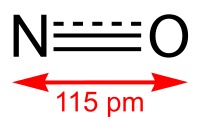
Photo from wikipedia
Catalysts/co-catalysts for cathodic oxygen reduction and anodic methanol oxidation reactions (ORR/MOR) play the major roles in promoting the commercialization of direct methanol fuel cells. Herein, bimetallic zeolite-imidazolate-frameworks (CoZn-ZIFs) is used… Click to show full abstract
Catalysts/co-catalysts for cathodic oxygen reduction and anodic methanol oxidation reactions (ORR/MOR) play the major roles in promoting the commercialization of direct methanol fuel cells. Herein, bimetallic zeolite-imidazolate-frameworks (CoZn-ZIFs) is used as precursor to synthesize Co3O4@NPC/CuO composites as catalysts for ORR and Pt supports/co-catalysts for MOR. The ORR activity (E1/2 = 0.83 V) and long-term stability (activity retention of 85.5% after 30,000 s) of Co3O4@NPC/CuO-400 (400 °C) dodecahedron are better than those of commercial Pt/C (10 wt%) in alkaline electrolytes. The surface CuO with variable valence states (Cu0 and Cu2+) can be used as both the active component for ORR and the protective layer for Co3O4 to enhance catalytic stability. Partial removal of CoOx from carbon framework promotes the exposure of highly active sites (Co2+) on the Co3O4. For MOR, the mass activity of Pt-Co3O4@NPC/CuO-400 (5 wt%) (1947 mA mgPt-1) is much higher than that of Pt/C (751 mA mgPt-1), mainly attributing to that the Pt active sites are uniformly dispersed on Co3O4@NPC/CuO support. The strong interaction between Pt and CuO can reduce the bond strength of Pt-CO to enhance CO resistance. Co3O4 can activate H2O molecules to provide sufficient OH- species to promote MOR. This study provides a new idea for preparation of active ORR catalysts and MOR co-catalyst from bimetallic ZIFs.
Journal Title: Journal of colloid and interface science
Year Published: 2021
Link to full text (if available)
Share on Social Media: Sign Up to like & get
recommendations!